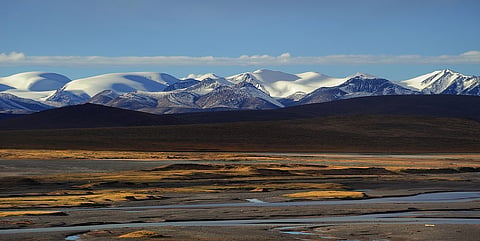Hunger for Tibet
(This is an essay from our March 2015 print quarterly 'Labour and its discontents'. See more from the issue here.)
Nineteen million people – a preliminary estimate – have lost their homes, their land and their property. Their only means of survival is to move into other regions; but there is no other region that can feed so many refugees. Hunger will probably drive them to violence. This is harvest time, already there has been plundering of crops and of course if the victims have nothing to eat themselves they will join the starving and seize crops elsewhere.
The excerpt above comes not from a report on climate change or the displacement of local people following the building of a dam, but from China Tidal Wave, a futuristic novel published in 1991 by the writer and activist Wang Lixiong. In the novel, as a result of the central government's relentless extracting of natural resources, the Yellow River bursts its banks, causing wide scale displacement and chaos. This event sets off a chain reaction in which several members of the ruling party make bids for power and plunge the country, and then the world, into war. In the nuclear winter that follows, those who have survived in China struggle on with what little natural resources remain, cultivating a vegetable called shugua and living in shelters that dot the ravaged land. At the end of the novel, Big Ox, a thuggish henchman of the Green Guards with a penchant for rape and torture is mauled to death by a Tibetan mastiff – the demise of the villain in the jaws of the dog symbolising the final and grisly triumph of a 'pure and unspoilt' remoteness over the brutal pursuit of power.

